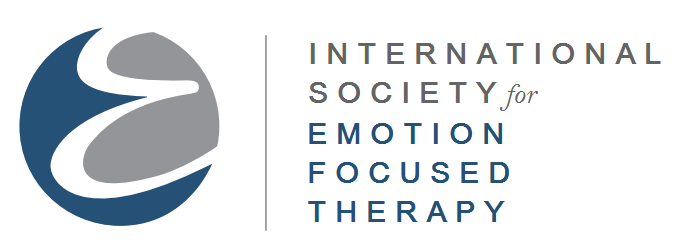Institute document
isEFT views the national/regional Institutes as the cornerstones for the dissemination, promotion and development of EFT and wish to strengthen their position through transparent principles regarding their relationship with IsEFT and their roles.
The institute document below describes the relationship between IsEFT and the national/regional EFT institutes. It outlines the mission of IsEFT and the institutes, recognized by IsEFT, and describes principles for dealing with common challenges, such as applications from new institutes for recognition by IsEFT in regions where institutes already exist.
The Relationship Between the International Society for Emotion Focused Therapy (IsEFT) and the Emotion Focused Therapy (EFT) institutes (January 2025)
1. isEFT promotes Emotion Focused Therapy (EFT) practice, theory, training, and research with the support of EFT institutes.
2. The primary mission of EFT-institutes is to disseminate, promote, and further develop Emotion Focused Therapy (EFT) in their respective areas of influence.
The EFT-institutes provide isEFT recognized trainings that can lead to the certification of EFT therapists, supervisors, and trainers and are expected to actively mentor and support the development of trainees, supervisors, trainers and an EFT-community in their respective areas of influence.
3. Institutes are established according to the laws and professional regulations of their respective national/regional context.The IsEFT is not legally responsible for any actions or omissions of an Institute that is recognized by them.
4. To have an EFT Institute recognized, Institute heads must submit their curriculum vitae and a mission statement of how they plan to disseminate, promote, and develop EFT in their regional context to the IsEFT Board.
The mission statement should include plans for the delivery of isEFT recognized trainings and the development of therapists and supervisors in the medium term and trainers in the longer term. Recognition of an Institute is at the sole discretion of the IsEFT Board. After which the IsEFT Board will undertake to support and mentor the institute to help it grow EFT in their national/regional contexts.
Normally institute heads are EFT trainers. In cases where the Heads of national/regional institutes are not yet trainers it is expected that heads of EFT-institutes will follow the training to become EFT therapists, supervisors, and trainers themselves.
5. In the event of another institute seeking recognition as an EFT-institute, in national/regional contexts where an institute has been recognized already as an EFT institute, the new application needs to be endorsed and supported by the recognized existing EFT-institute before it can be considered by isEFT.
If the Board concludes that the national/regional market is large enough for one or more additional institutes and that the monopoly of the existing institute would undermine the goal of disseminating EFT in a country/region, one or more institutes may be approved. In doing so, the Board will attempt to ensure that the viability of the existing institution(s) is not compromised.
6. EFT training in a national/regional context without an EFT-institute
Institutes in regions where there are no recognized EFT-institutes may deliver IsEFT recognized trainings by EFT-trainers. Trainers who are invited to provide level I and level II trainings in regions with no recognized EFT-institutes are expected to share this information with the board to determine any conflicts of interest.
7. Institutes pay an annual fee plus a curriculum fee of 10 US Dollars per participant per workshop corresponding to Level 1 and Level 2.
8. Given the different divisions within isEFT (EFT-I, EFT-C, EFT-F, EFT-Y), it may be the case that there is an application for recognizing another institute offering training in a specific division.
The following steps should be followed:
- Before submitting the application to the isEFt, the applicant will seek the opinion of the advisory committee of the division in question, consisting of the founding members of this division. The advisory committee in question will issue a letter of approval if sufficient suitability.
a. For EFT-C the advisory committee consists of Rhonda, Les and Serine.b. For EFT-F Mirisse and Anne Hilde
c. for EFT-Y Mirisse.
- With this letter of approval, the application can be made to the Board following the isEFT application guidelines
- If the existing institute does not already offer training in this form of therapy and has no intention of doing so, the isEFT Board will approve the new institute to offer training in this specific form of EFT. If the existing institute does not offer training in this form of EFT but intends to do so in the near future, the Board will ask for a plan of action and make an assessment of the two options. The decision will take into account the protection of existing Institutes and what's in the best interest of the Division.
- The decision will be made on a case-by-case basis by an advisory committee – ideally consisting of the supervisory board member of the existing institute, a neutral board member and a member of the advisory committee of the division.
- The applicant and the existing EFT Institute in the region (if there is one) will have a written response with a justification for the choice no later than 3 months from the time isEFT receives a complete application, 4 months if July/August is part of the time period.
9. Recognition of an EFT Institute may be withdrawn at the sole discretion of the Board under the following conditions but not limited thereto:
- national institute does not fulfill its mission to provide high quality training for EFT therapists, supervisors, and trainers, or actively promote EFT and create regional EFT communities.
- the institute's leaders violate ethical and professional standards.
- the Institute fails to pay the requisite fees.
- the board concludes that a relationship of trust is no longer possible as image or the reputation of the national institute/ institute director is detrimental to the reputation of IsEFT.
